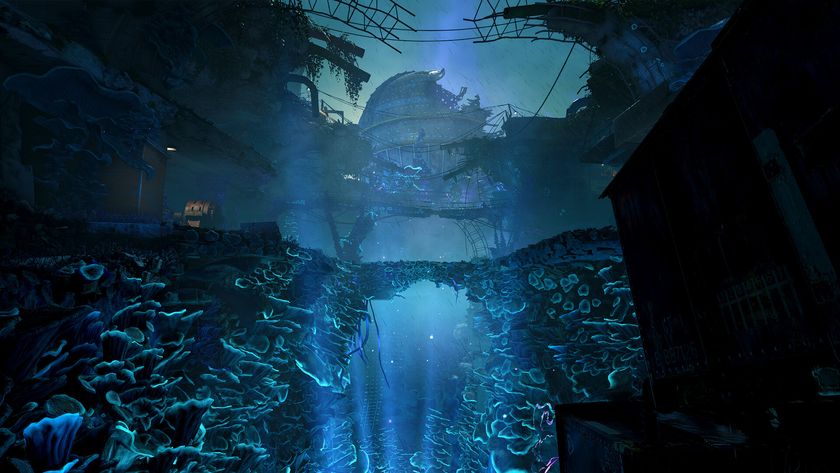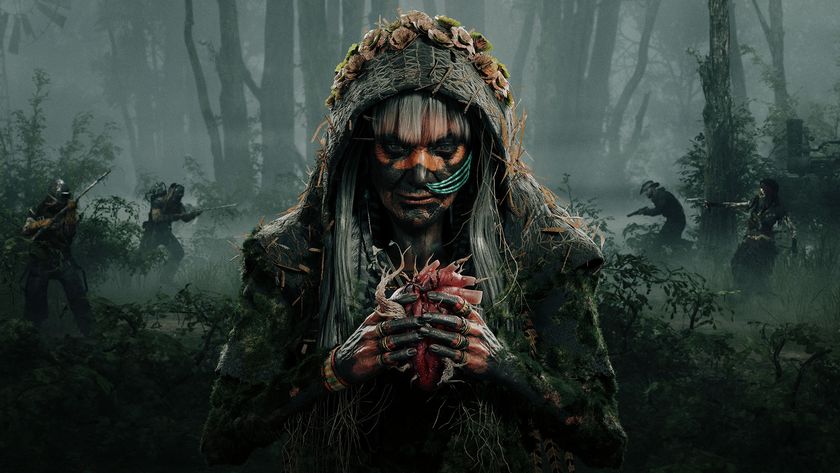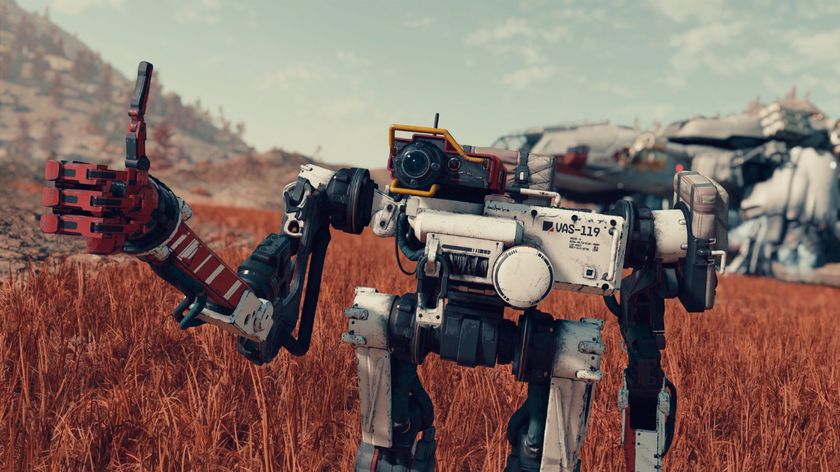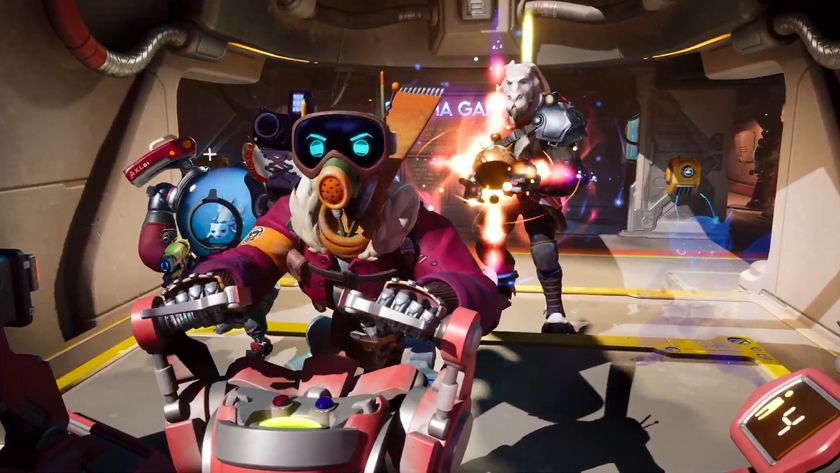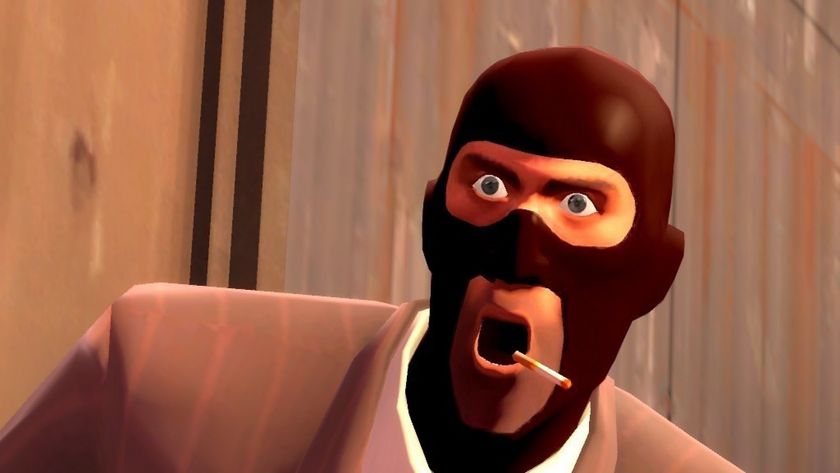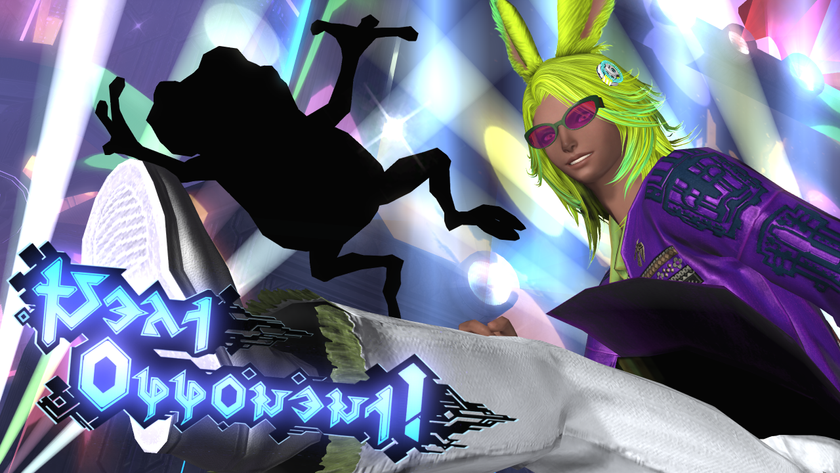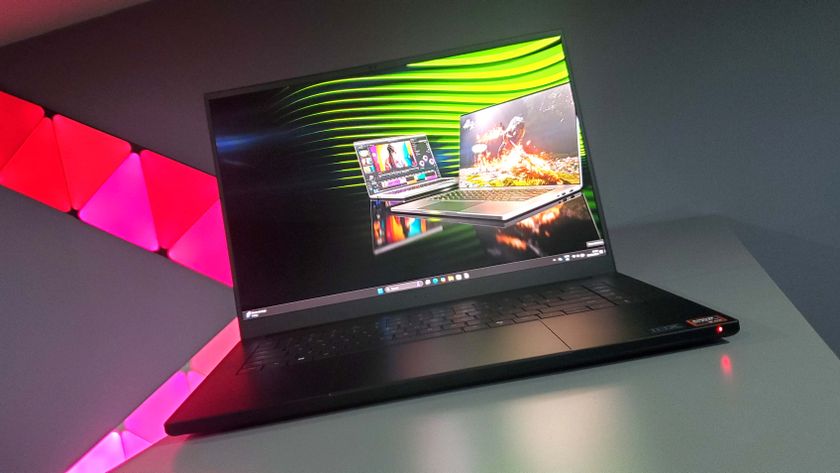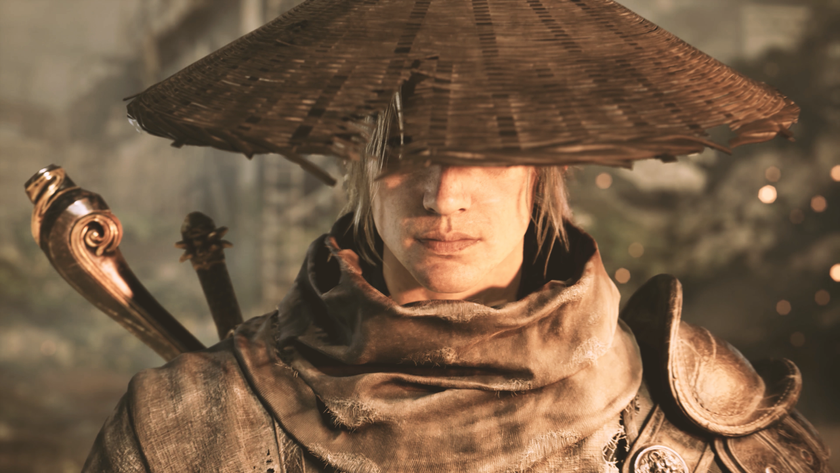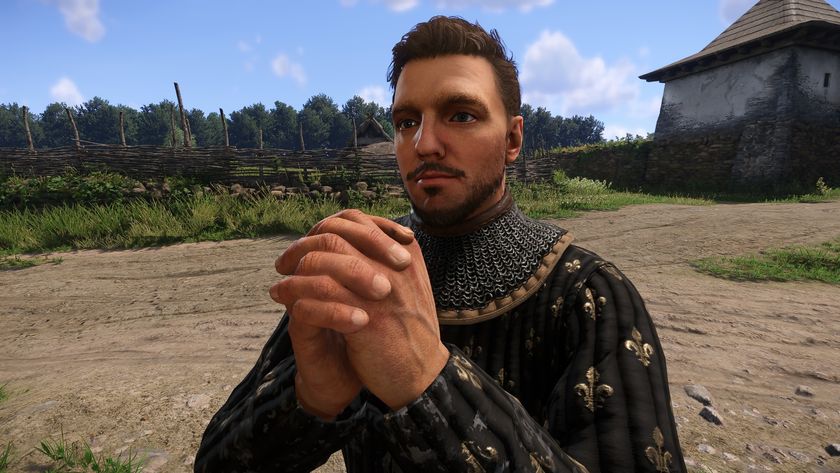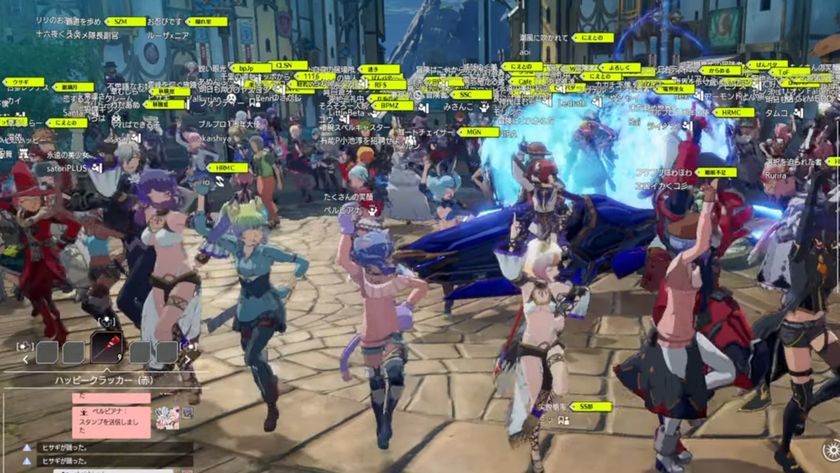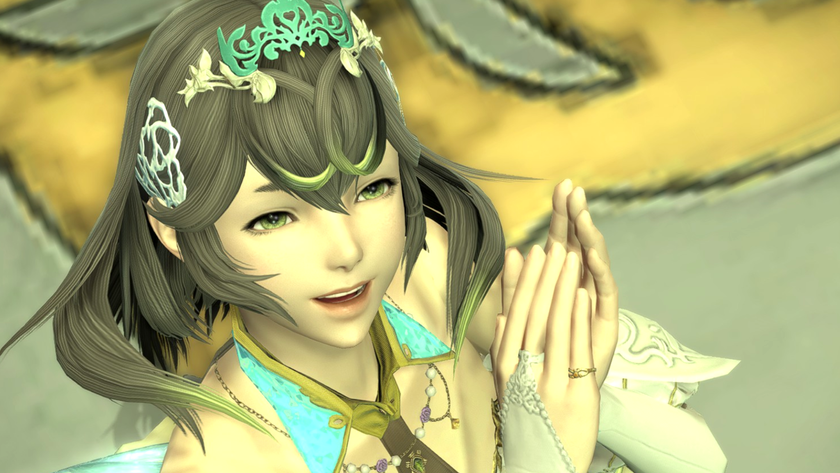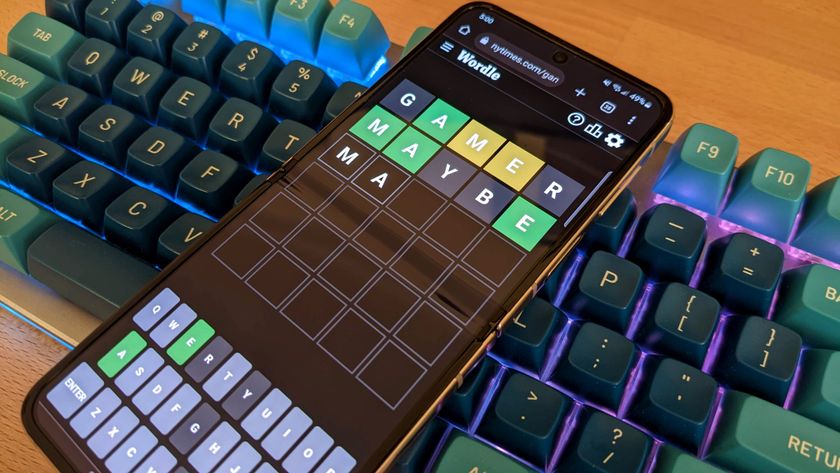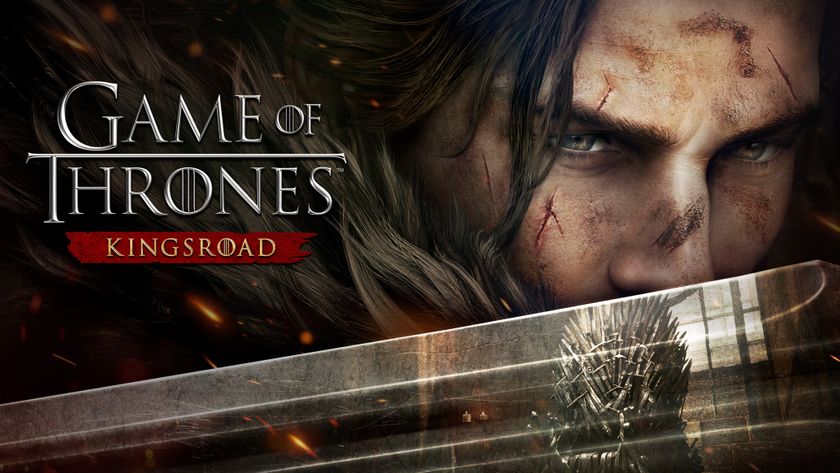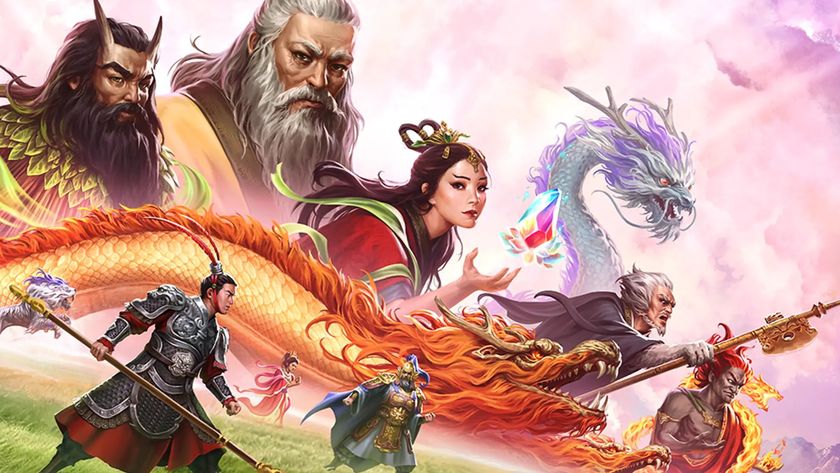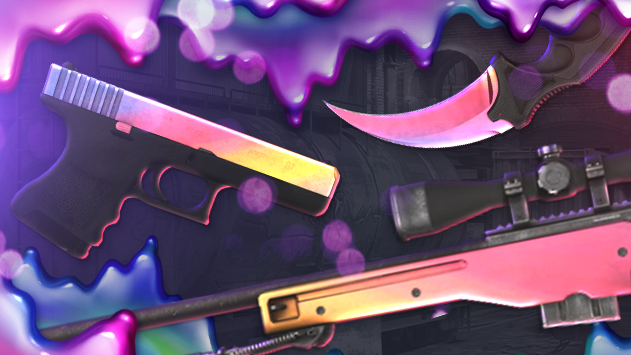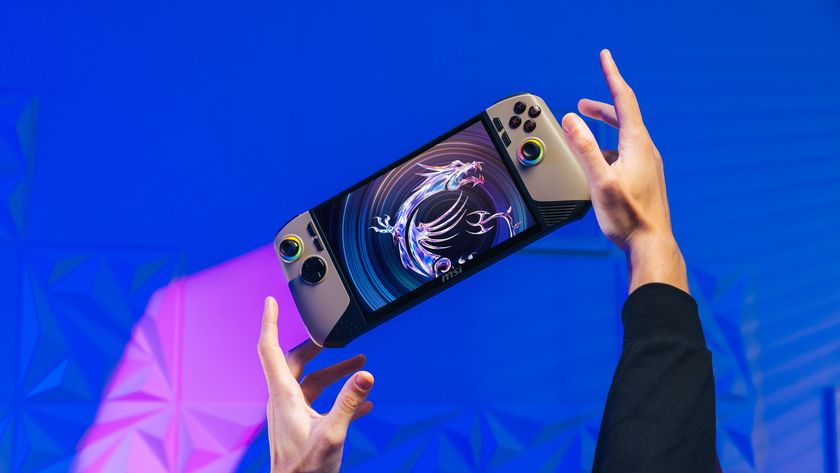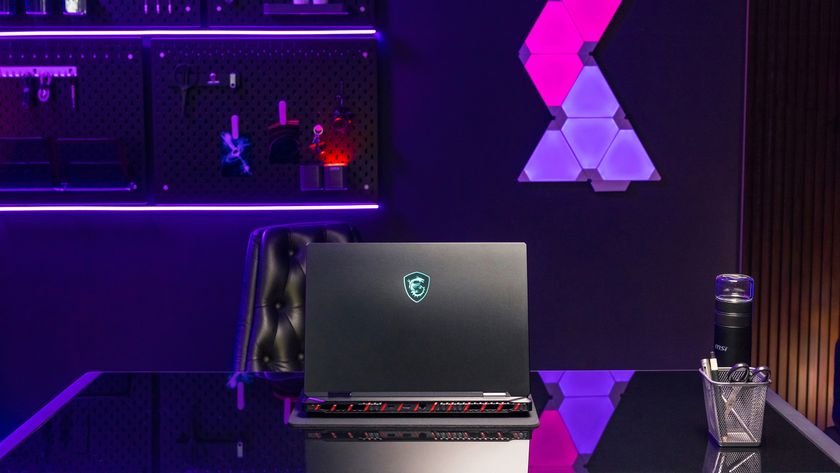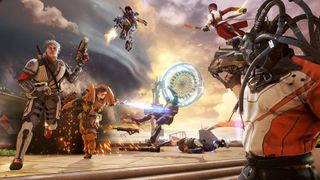
First-person shooters had a big year in 2016, something that wasn't necessarily expected when Gears of War creator Cliff Bleszinski and Boss Key Productions revealed LawBreakers in 2014. Since then, Overwatch has sort of become the de facto leader of the character-based shooter movement, but when we met up with Bleszinski at PAX East 2017, he told us that he isn't trying to make an Overwatch killer. In fact, one of the most important things we learned about LawBreakers is that its focused on carving out its own niche, developing itself in ways that make sense for the more mature-leaning arena shooter.
Also in our interview, we discuss how LawBreakers open development has helped and hurt the game, why Bleszinski thinks Counter-Strike players will flock to his new shooter, and the ways that the genre has changed these past few years.
PC Gamer: How has LawBreakers changed since the closed alpha?
Cliff Bleszinski: Well, now we have far more variety in the classes—we call them "roles." Finally having a CQC tank, you know we wanted the Chronos and Bombshell characters to be the tanks before, but they wound up kind of being the berserkers, get in there and shoot the rocket launchers at everyone. And to actually have the robots, Nash and Aegis, who literally can hit Q and armor up like that bad Lost in Space reboot with Matt LeBlanc, where the armor goes on. It looks really great and it was actually really tricky for the animators to pull off. Then, you know, just start blasting people with their shotgun and blade combo. It's incredibly powerful and tough to defeat, as well as actually doing a support role. For me it was one of those things, where I was like 'I'm not big on support,' and realizing that there are people out there who want to heal. And finding out what our original take on that was going to be, instead of trying to out-Mercy Mercy [from Overwatch] because you're not going to make a better Mercy.
"...you're not going to make a better Mercy [from Overwatch]."
—Cliff Bleszinski
And then also, what was our solution for sniping? I didn't want to make Battlefield where you run around on the field for five minutes and get picked off by somebody in a ghillie suit. We have a gunslinger who has two guns, Alpha and Omega. Alpha is the one where you can pepper people a little bit with shots, but Omega is the one where you kinda charge shot, go for the headshot from a distance, but it doesn't do that sniper zoom. And the character has an omni-directional Blink around the map—or warp, whatever you want to call it—as well as an intel blade so that they can see enemies behind walls. You throw the intel blade, see the person coming around, target their head and pop them.
When we were doing our alphas, I think we went live with too few characters. Yeah, there's eight characters, but you know, it's really only four because while the fiction is two sides, the roles play the exact same. By having the full run of seven, and the other two coming soon make it nine—we announced Wraith and Harrier at the panel—I think getting to that full robust section, it's at the point where the game feels like you can play it for hours and not get bored.
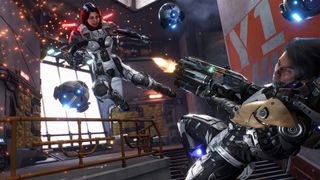
LawBreakers seems to be getting back to these fast-paced FPS roots. Do you think adding things like a melee tank, support, and that kind of stuff dilutes that at all?
The biggest gaming news, reviews and hardware deals
Keep up to date with the most important stories and the best deals, as picked by the PC Gamer team.
I mean, Unreal Tournament had the Impact Hammer and Quake had that glove, so there's certainly room for melee weapons. But at the end of the day, it's a shotgun. Nothing's more first-person shooter than a shotgun, it just happens to have a blade attached to it. Now, apparently I have a fetish for attaching sharp things to weapons. So the thing about this game, to keep in mind, is—it's hard to say this without sounding snotty, but when you use your Q abilities, it's not just a free-win button. You still have to actually learn how to use it, to aim, and to earn it. Some of the other games that have the Q, it's like, 'OK, Boom,' all you did was wait for your timer to go. For this game, also, collision boxes are pretty legit and straightforward, there's none of that soft-padding of collision boxes. I don't want to freeze players in place. That kind of stuff. There's a lot of that core FPS stuff that I don't want to violate in this game.
Going back to the alpha, what were some of the things that you learned from that period?
Visibility and feedback. I didn't want to just throw giant arrows over enemies' heads, but then we found that by doing the subtle red outline, it allows you in a nano-second to spot who's friend or foe. And I didn't want to do health bars, but when we really looked at tank-ey characters and the fact that you can engage with them and know, 'Oh this person's been worn down,' as a lighter class and have a chance at taking them down. That was really important, as well as of course having a variety of characters and going for that support class.
And obviously new maps. One of the problems with the way we built the studio and the game is, our first map compared to our latest maps that we'll be revealing in the coming months—the later ones look so good whereas the first maps have really started to lag behind. So my art director and I are going to go back to the older maps and make them look nearly as good as the later maps. And overall, it's one of those things of making sure the netcode's optimized, making sure the servers stay up, and continuing to listen to feedback.
"If you do all of the stuff that's in every other game, you're just going to be a bad clone."
One of the other things we learned from our usability tests as well as the alpha is that a lot of FPS players weren't knowing that you could click Mouse-2 and have an alt-fire with most weapons, which I thought was pretty common by now. And the other thing a lot of them didn't think to do—because a lot of character-based shooters just give you one weapon—is cycle the mouse wheel and select your secondary weapon. We spent good time and money making those secondary weapons for a lot of those characters, so we're going to figure out ways to have tooltips to get people into that.
And also, onboarding. When we set out to build this game, I didn't want to say 'Now we have an elf with a bow and arrow, now we have a gnome who builds turrets.' Those are the archetypes that people know and that's good for usability and accessibility, but I wanted to differentiate and say, 'OK, if we're going to do a medic, how are we going to do it? It's going to be a person with crazy Tribes-like jumpjets that has little robots that they send out immediately so they can get back to shelling the battlefield. And also, their ultimate is this great bubble shield that sends all the enemies away, protects their allies and they get a little bit of health. So, try to think of it as a hybrid type of class of different archetypes from other games.
Do you feel like it's unfair that you guys are hindered in that way basically because people are expecting it to be something it's not, in terms of when people think healer, they don't necessarily think jumpjets and nanobots?
It's a blessing and a curse, the way that I went about this. One of my mantras around the studio is, like, 'Oh, we have to have a sniper rifle,' I'm like, 'Where does it say that?' It's the same thing when I go back to having a crouch button. Gears basically had a cheesy crouch, but you hardly used it. And this game doesn't have a crouch button because when are you going to find time to do that in a game with a pace like this? So my mantra for that is, 'If you do all of the stuff that's in every other game, you're just going to be a bad clone of all those other games, so do something different, own it, and make it your own.'
Was there anything you could call out from that alpha that was really successful?
I think stability was important. Generally, you could find a match and get online. The performance was pretty freakin' solid in regards to framerate and lag. That's one of those things coming from the launch of Gears 2 years ago, where the game was essentially broken except for Horde mode and Horde mode helped save that franchise. That's super important to us, as well as keeping the framerate up. I'm a big believer in, 'If the game isn't 120 frames per second, I don't want to play it.' And when I'm playing on the mid-spec and it's only 60, I'm like, 'This is bullshit!'
How did the team at Boss Key react to people's opinions of the game?
We were happy. The big thing is that we knew in our heart of hearts that we needed more. That's why we went back to the lab for six months, just to get more characters, more abilities. The audio department and Dan, my designer, have really shored up a lot of the audio tells, so characters are complimenting each other after kills now and you clearly know when someone's pulling their ultimate on the enemy side.

Boss Key has a very open development process so far. You've been very communicative in the early months of the game. Why did you decide to go that route?
It's kind of the new world order. I didn't want to do the traditional E3 stage announce ... Part of it comes from a culture of transparency, in kind of building the loyal and rabid fanbase early that will stick with you throughout everything. We're building up to get to that hype level I want to get with the game. We're not there yet, but when I come to PAX and I walk around and see people wearing our shirts from three years ago when we did our announce panel, it's a pretty good feeling. So we're building a steady and loyal community that will follow us, and hopefully they'll become our evangelists to go out in the field and recruit people.
Going back to the maps, would you refrain from showing early stuff like that in a future game? As it is, those early images don't really reflect the game as it is now.
That's the problem with releasing screenshots early. The game looks really good now, the new screenshots are really hot. The old ones by comparison are [negative-sounding noise]. And when people cover the game, no offence to journalists, but some journalists are like, 'Fuck it!' and they grab whatever's there and put it in the headline. Rohan [community manager] gets frustrated with it, too. He's like, 'Can we please use the latest stuff?' I always say, 'Be careful when you release a screenshot because screenshots never die.'
Would you do it differently, would you show less in retrospect?
In hindsight, I probably would, because we had a new art team that was learning how to work together. The newer maps have so much more personality to them, the color balance is so much better, the lighting is so much better. If we were like a sports team, we started off as the Bad News Bears and now we're working towards the team in act three that really has their shit together.
So you've grown as a studio, gotten better?
Yeah, everybody's learned how to work better together. The last three classes came online a lot faster than the first four. Even from a design standpoint, there's a whole lot of over-thinking things. And it's like, 'Let's just iterate, try stuff, and do some rapid iteration as fast as we can.' So for my end, it's not really new to have the old screenshots. If you like back on history with the first Unreal, way back in the day, the first screenshots looked OK at the time, but by the time the game shipped, it looked five times better. And that was a new team working together as well. I think this is something that happens any time that you have a new studio with a new IP and a new project.
"I want to make the character-based, first-person shooter for the Halo, Call of Duty, Battlefield crowd."
How do you think an arena, class-based shooter genre has changed since you started developing this? Three years ago, MOBAs were the hotness and nowadays there's a lot more class-based shooters, so how do you see LawBreakers shifting within that?
It started off as this nostalgia that people have for arena shooters. Your traditional arena shooter, you play and within thirty minutes you've seen everything. The variety comes from the maps. The characters all play the same and whatever weapon you pick up, that's your class. That was fine for 1998, but moving forward—I'm pretty sure the new Quake has abilities for each character, too—that depth comes not from the maps, but from the characters and the abilities and the counters between classes. So I think that layer of depth is really, really needed. From our end, one of the big differentiating things is going to be our art style. So many games have this very colorful, Pixar-y, Blizzard look to them, that was kind of borrowed from a lot of the popular mobile and MOBA games, and I want to make the character-based, first-person shooter for the Halo, Call of Duty, Battlefield crowd. That's kind of what we're gunning for.
You said before that LawBreakers differentiates itself as being a more mature shooter, the one that swears. Do you think that will still be enough?
I think it'll be part of it. But I also think also, the fact that we really are really a shooter game for [shooter fans]. The hitboxes are legit and straightforward. The mouse sensitivity, the framerate, the way the movement is—when you land you can kind of jump skate a little bit, like strafe jumping. A lot of that stuff is in there that the core Counter-Strike and Quake players love. And we found that a lot of CS:GO players are gravitating towards this. They're not going to stop playing CS:GO ever, but when it comes to the character-based, ability-based first-person shooter, I'm thinking we'll be the one that the Counter-Strike players pick.
It's hard to find a conversation about the game online without somebody mentioning Overwatch at some point. You're comparing yourself to Counter-Strike and these much more hardcore first-person shooters. Do you think the Overwatch association is fair?
It's humanity, dude! I've been dealing with this my entire career. The human mind loves to pattern-match. It's a survival technique. It's like, 'Oh, see that big bear over there? It ate my friend.' And then you meet a new bear and you're like, 'Oh, my god! This bear is going to eat me because it ate my friend.' People just like to put things into tidy little buckets, and to the point where they will stretch it so far.
Some kid was trolling my Instagram one day on a random photo I posted of my dog. If you've seen our characters Maverick and Tosska who have the Gatling guns. They've got their jetpacks, they can create zero-G pockets, and everything. And he was like, 'Oh, you guys have a girl with a minigun, so you're cloning D.Va,' and like, 'You're dealing with a tiny Korean girl in a big pink mech who can launch her mech and explode.' So girl and a minigun means copying Overwatch? Right. OK. You're reaching there, buddy.
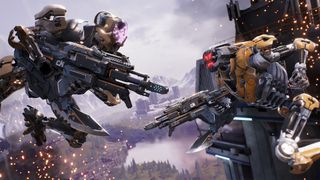
Which is funny because the Blizzard developers have said very openly that they borrowed a lot of their character ideas from other games, like Pharah from Quake.
Yeah, and I mean, that's the thing about our character having the warp or teleport, right, and the fact that, 'Oh, Nightcrawler had that, and it was actually in Dishonored, and it was in Dishonored because it was from code from a canceled IP that I worked on at Epic where a character could modify their density and kind of go through grates, and we called it the Bamf, and so Tracer has that and we have a character that does that, and so immediately, like, oh my God!' And then like, Overwatch gets—everyone gets all excited now they have jump pads, and I'm like, 'Uh, Quake 3 called.'
You're dealing with a generation of young gamers who don't know those old games, so what's old is new, and with the success of Overwatch—which I'm happy, because that means character-based first-person shooters are a viable thing, and if they're Coke I'll be happy to be Pepsi or RC Cola—but people are primed for this kind of game right now. So it's just a fascinating thing for me to watch, kind of like, that cycle of gamers assuming that because Overwatch did something they were the first to ever do it. And you're like, 'Eh, not necessarily, there's been other games with heal beams.'
Does that frustrate you at all?
It frustrates me, but this is why we're here, to get the word out. And my big thing is, once people gets hands-on with a game, they start to really see it—like with the alpha and before, when there was only really four classes, people were like, 'OK, I can kind of see some potential here, but there really wasn't enough there.' I think now we've really kind of turned the corner to really starting to become the robust game that I originally wanted to make.
If [Overwatch is] Coke, I'll be happy to be Pepsi or RC Cola
I like the analogy you made of Coke to Pepsi, or RC Cola. Do you think every new shooter has to try to be an 'Overwatch killer?'
The second you say the number one game in a genre, that you're going to be a killer of it, you're admitting that game's never going to be killed. Remember all the 'Halo killers' that were coming out? Halo still hasn't been killed. So again, it's not a killer thing, it's coexist. You know, I play Battlefield and Call of Duty. Back in the day I'd play Tekken and Street Fighter. There's room for two or three games at the top of a given genre, and after that it's fighting for the scraps. And that's what happened in MOBAs. You know, you had League crushing it, Dota, Smite doing well, and then after that you had Vainglory—that's the mobile one, right? That did well because they found their niche on tablets, right? That's the other thing is, find a genre that hasn't been used, on a platform that hasn’t done it, and step three, profit.
So that’s the key, finding your niche?
Yeah, exactly. And I'm hoping we come out in a timeframe where Overwatch is great and established, but people maybe want to try something a little bit different.
